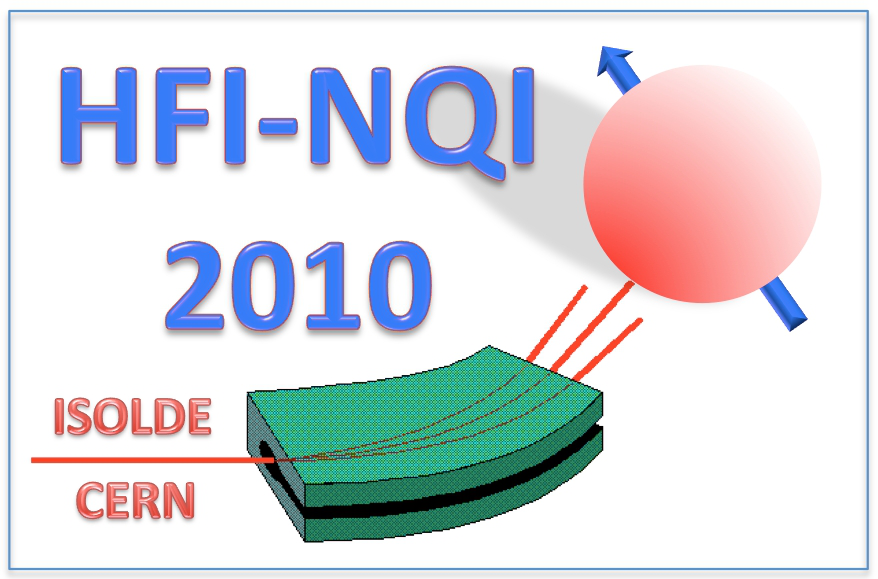Speaker
Prof.
Valery Orlov
(Russian Research Center "Kurchatov Institute", Moscow 123182, Russia)
Description
Unique magnetic properties were earlier found by measuring the NQI parameters in a number of bismuth (III) oxy compounds with s- and p-electrons hitherto classified as diamagnetic [1]. In α-Bi2O3 single crystal the magnetoelectric effect and paramagnetism depending on magnetic prehistory of the sample were observed [1].
In Bi4Ge3O12 (BGO), local magnetic fields (Hloc) of the order of 20-30 G were found by modeling the Zeeman split 209Bi NQR spectra and spin-echo envelope [2-3]. A dramatic increase in the 209Bi line intensity was observed for this compound in the Zeeman fields (He ) hence revealing a remarkable elongation of the nuclear spin-spin relaxation time T2 under the influence of He [4]. This stimulated relaxation studies of the BGO crystals doped with the “magnetic” atoms Cr, Nd, Pr, Gd.
Here, we present the results of a study of the 209Bi nuclear quadrupole spin-spin and spin-lattice relaxation in pure and doped BGO single crystals in the temperature range 4.2300 K.
Various mechanisms (quadrupole, crystal electric field, electron spin fluctuations) governing the temperature dependence of the spin-lattice relaxation time T1 in pure and doped samples at different temperature ranges are considered.
Unlike T1, the spin-spin relaxation time T2 for pure and Nd-doped samples only weakly depended on temperature over the whole temperature range studied. Doping BGO with paramagnetic atoms strongly elongated T2, the elongation being also observed under the influence of weak external magnetic fields.
The magnetization of doped BGO crystals vs. magnetic field and temperature was measured using a SQUID magnetometer. The temperature behavior of magnetic susceptibility for the Nd-doped BGO crystal evidenced for the presence of the crystal electric field effects. The curves of magnetization vs. magnetic field measured for the Gd-doped BGO crystal under field cooling and zero-field cooling conditions were markedly different, although this difference was less pronounced than that for the α-Bi2O3 crystal [1].
References
[1] E.A. Kravchenko, V.G. Orlov, and M.P. Shlykov, Russian Chem. Rev. 75, 77 (2006).
[2] E.A. Kravchenko, Yu.F. Kargin, V.G. Orlov, T. Okuda, K. Yamada, JMMM, 224, 249 (2001).
[3] E.A. Kravchenko, V.G. Orlov, V.G. Morgunov, M.P. Shlykov, Hyperfine Interact. 180, 437 (2007).
[4] E.A. Kravchenko, V.G. Morgunov, V.G. Orlov, Yu.F. Kargin, JETP Letters. 86, 390 (2007).
Summary
The 209Bi nuclear quadrupole spin-lattice and spin-spin relaxation were studied in the BGO single crystals which exhibit, as was previously found, anomalous magnetic properties. The results revealed unexpectedly strong influence on the relaxation processes of tiny amounts of paramagnetic atoms (0.1-0.5 mol%) inserted into the BGO crystals.
| Are you a student, a delegate from developing countries or a participant with physical needs and would like to apply for a sponsored accomodation. Please answer with yes or no. | yes |
|---|
Author
Prof.
Valery Orlov
(Russian Research Center "Kurchatov Institute", Moscow 123182, Russia)
Co-authors
Prof.
Alexander Vasil'ev
(Moscow State University, Faculty of Physics, Moscow 119991, Russia)
Prof.
Eleonora Kravchenko
(Institute of General and Inorganic Chemistry, Russian Academy of Sciences, Moscow 119991, Russia)
Mr
Gregory Sergeev
(Russian Research Center “Kurchatov Institute”, Moscow 123182, Russia)
Mrs
Olga Volkova
(Moscow State University, Faculty of Physics, Moscow 119991, Russia)
Prof.
Tetsuo Asaji
(Department of Chemistry, College of Humanities and Sciences, Nihon University, Tokyo 156-8550, Japan)
Prof.
Yury Kargin
(State Institute of Metallurgy and Material Science, Russian Academy of Sciences, Moscow 119991, Russia)
